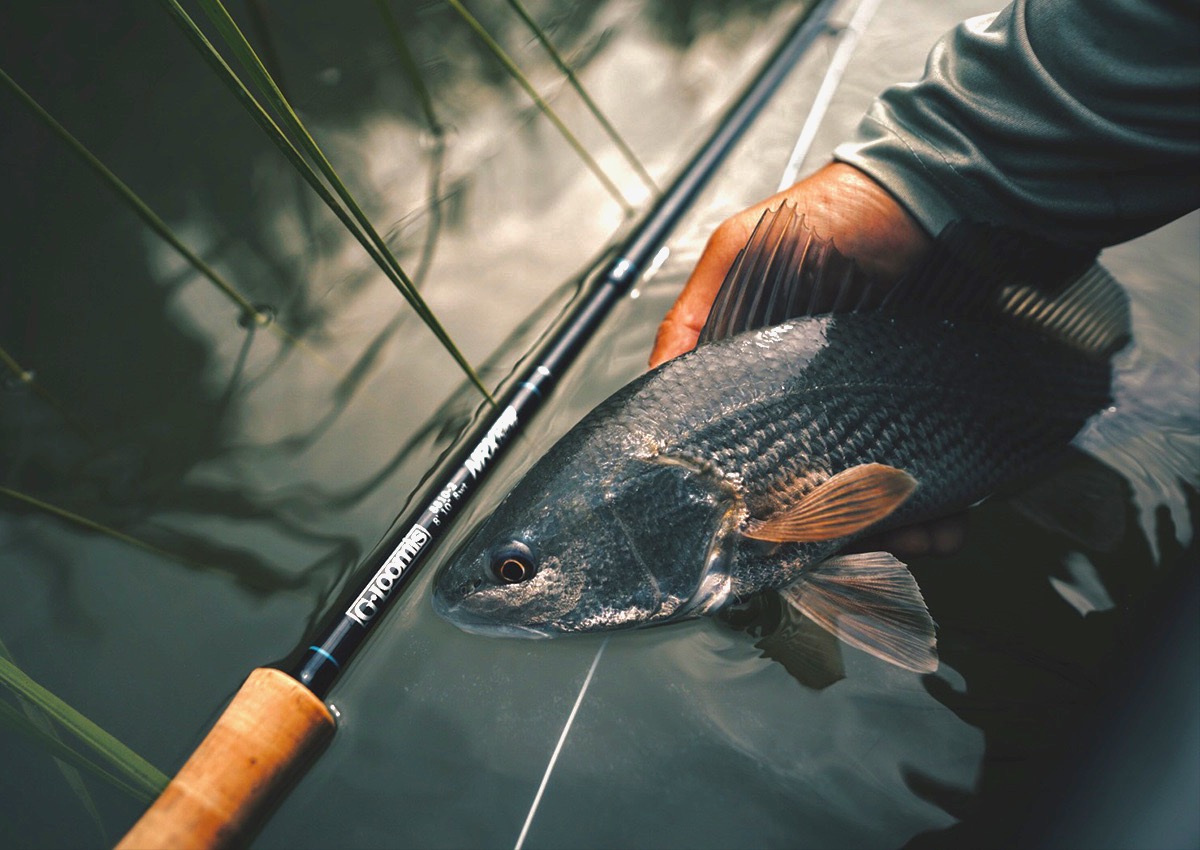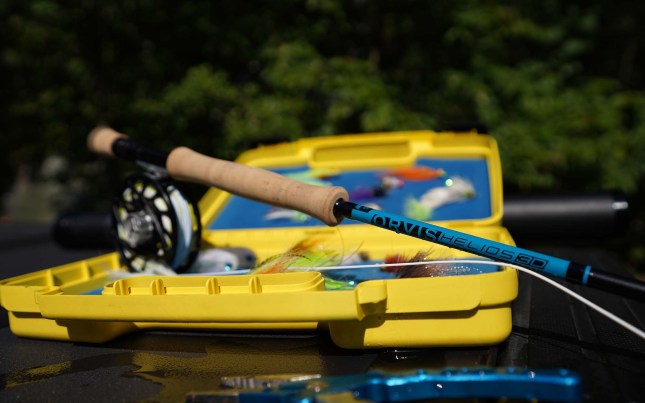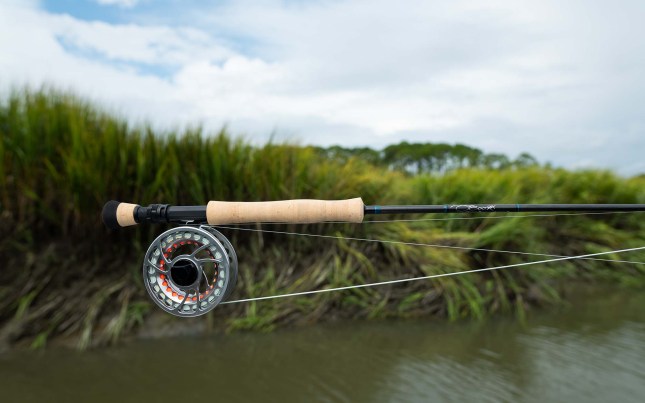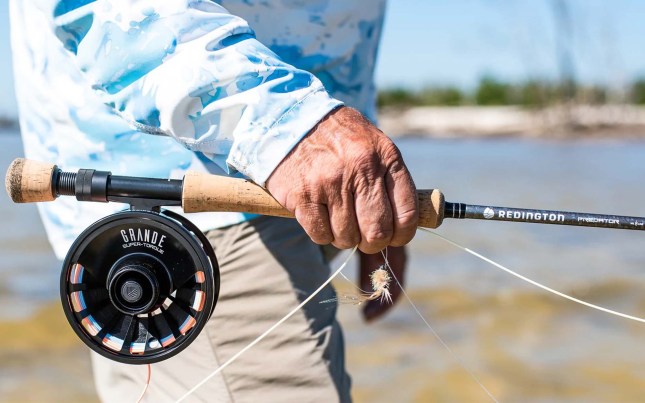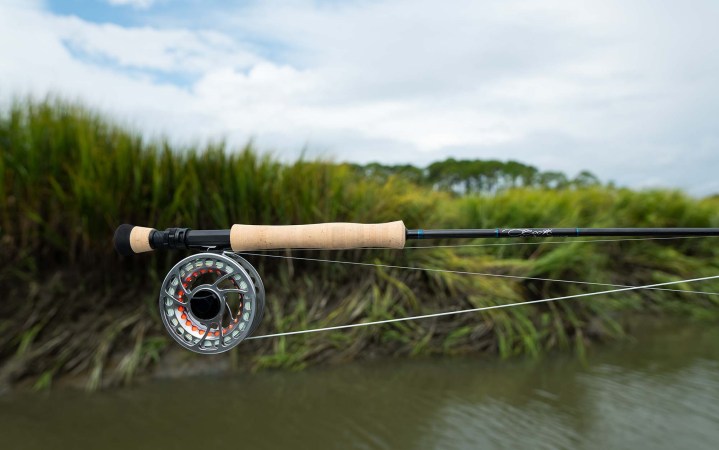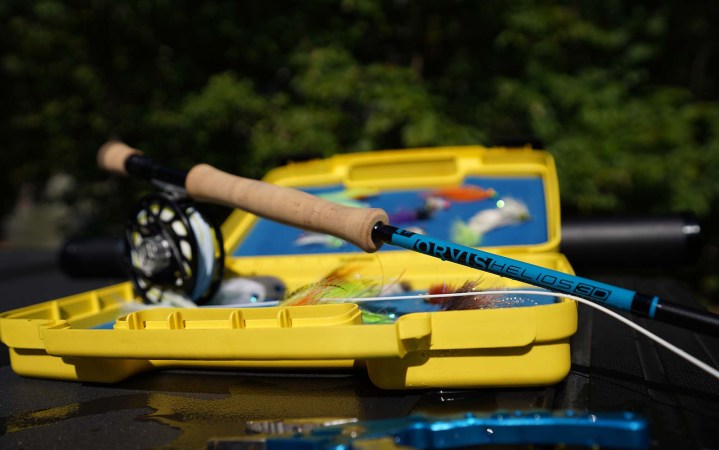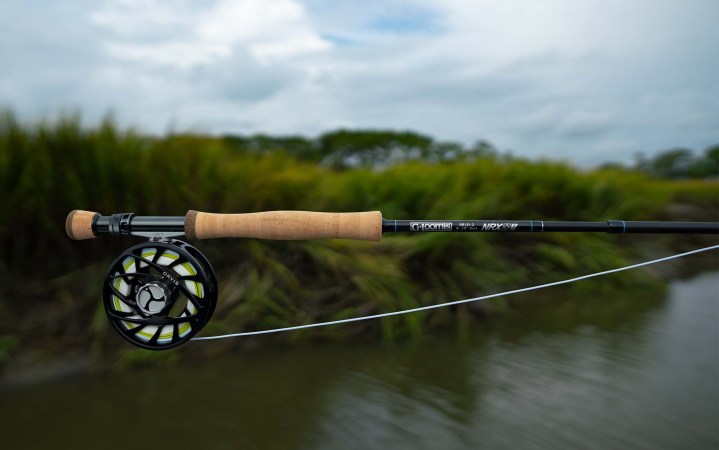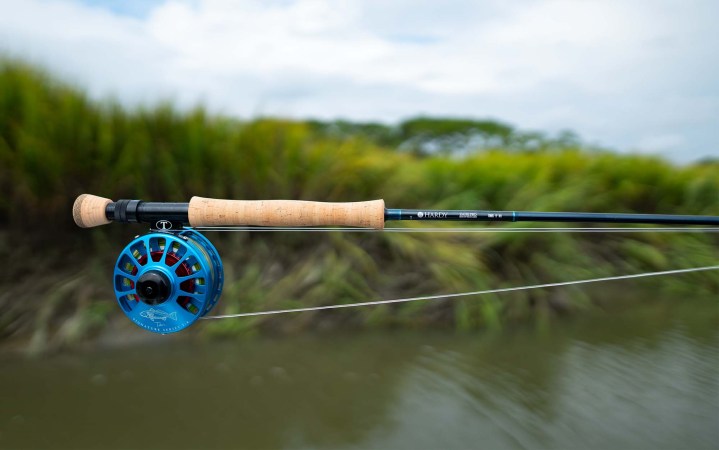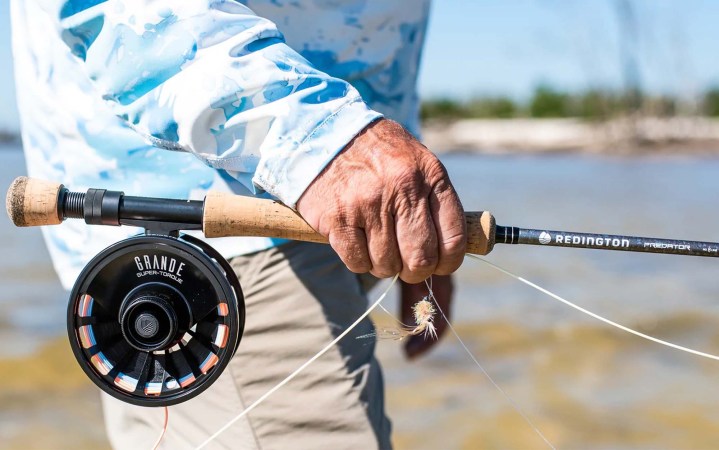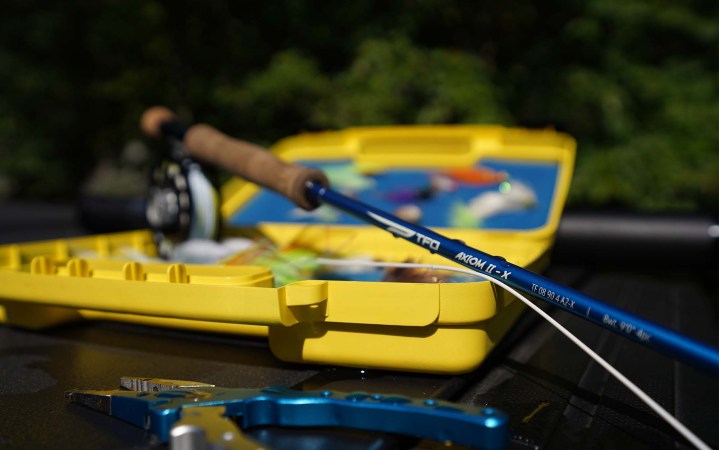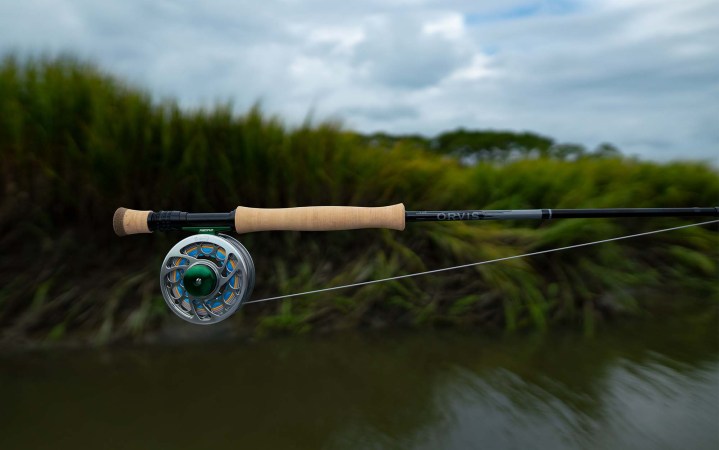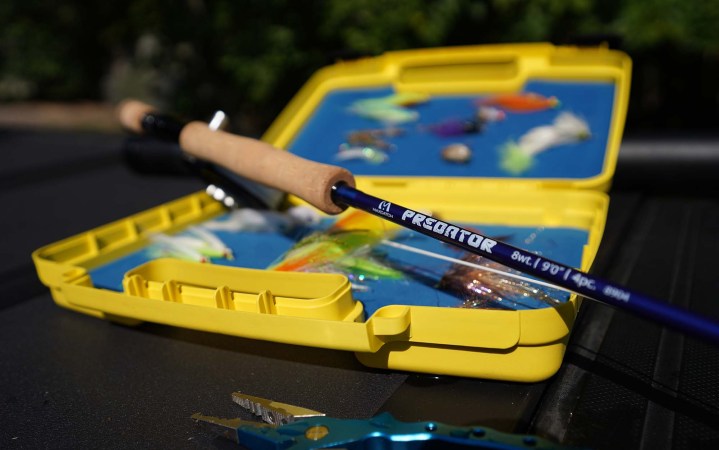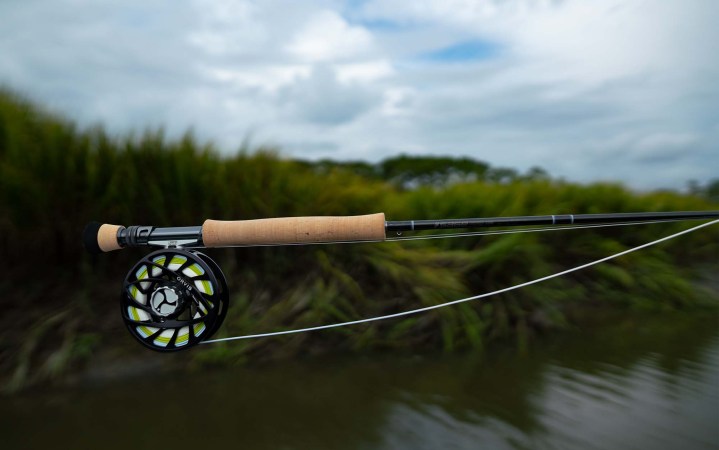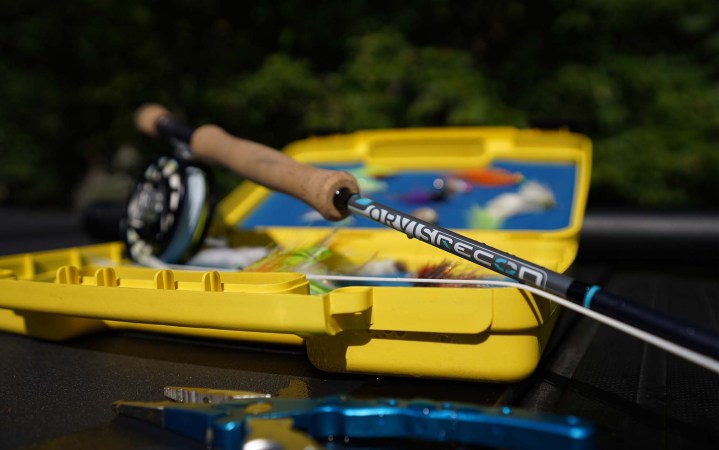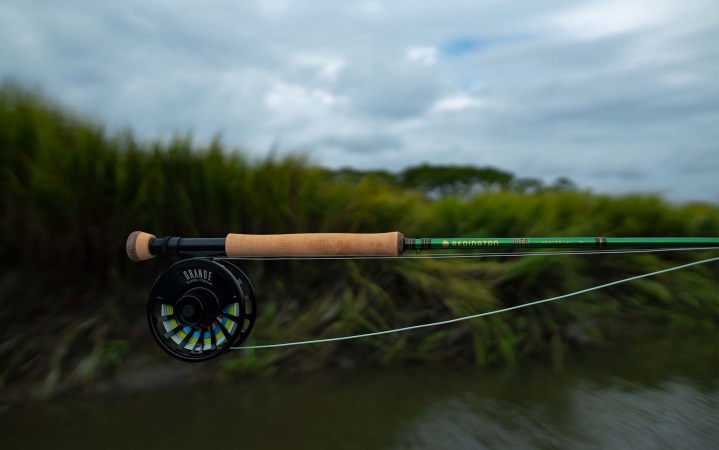We may earn revenue from the products available on this page and participate in affiliate programs. Learn More ›
As we polled into the back of a creek not much wider than the skiff, our guide said you’re only going to get one shot at these fish. We turned a bend and there they were just 50 feet away, tails out of the water and pushing a wake as they fed. In an open field, an accurate 50-foot cast is pretty easy. But it becomes incredibly challenging when you add in wind, adrenaline, being surrounded by back cast snagging tall grass, and line cutting oyster beds lining the creek. That’s saltwater fly fishing.
To meet those challenges you need a saltwater fly rod with the right mix of power and control—not all rods have that. To find the best saltwater fly rods, three fly anglers spent two days putting a dozen fly rods through a formal accuracy and distance test as well as some of the most technical saltwater fly fishing scenarios. If you’re in the market for a new rod, this review will help you narrow down which you want to buy or test out at a fly shop.
- Best Overall: Scott Sector
- Best Distance: Orvis Helios 3D
- Best Feel: G. Loomis NRX + T2S
- Best Fit and Finish: Hardy Zane Pro
- Best for the Money: Redington Predator
- TFO Axiom II-X
- Orvis Helios 3 Blackout
- Maximum Catch Predator
- Sage R8 Core
- Orvis Recon
- Redington Vice
How We Tested Saltwater Fly Rods
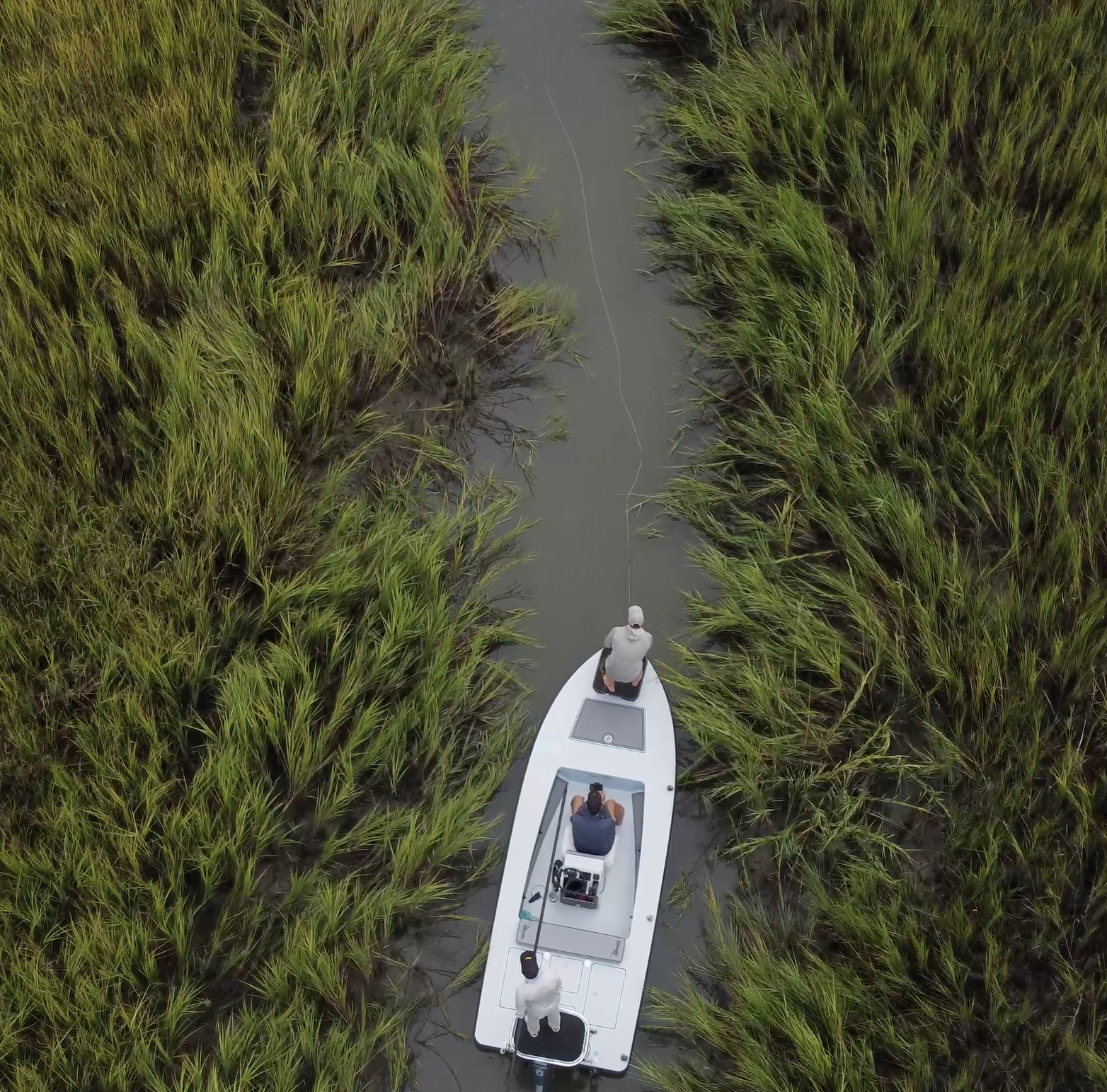
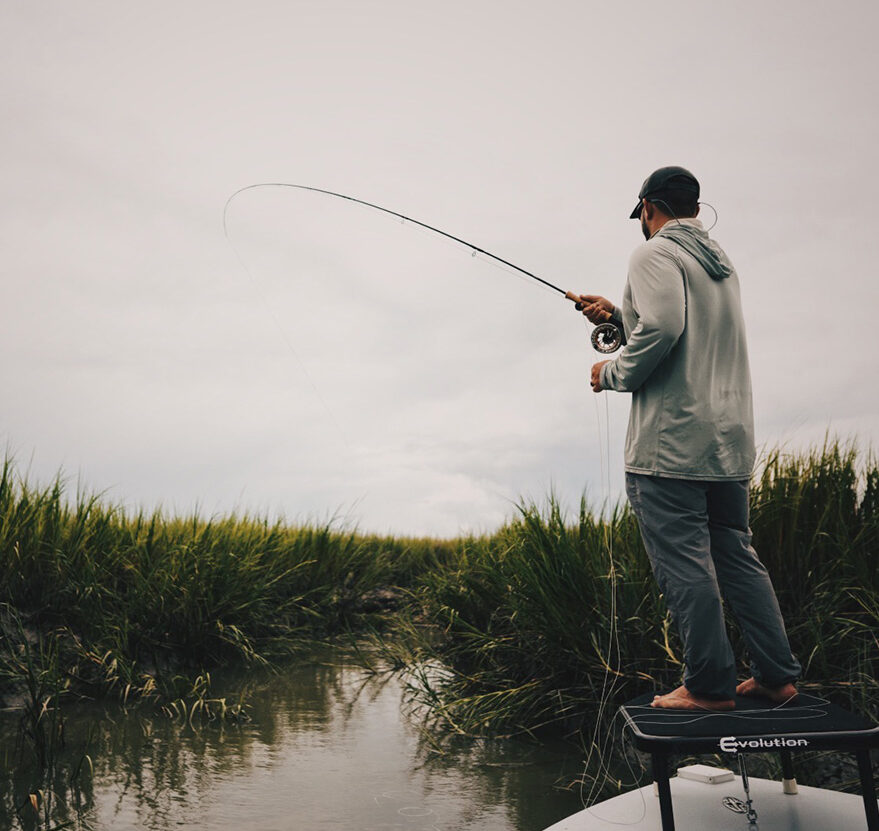
We used Captain Experiences, which is a service that connects anglers with trusted guides. They helped us find a skilled captain and an ideal test location to give the rods a workout in a limited time. There were several excellent options throughout the country, but we chose Charleston, South Carolina, because sight casting to tailing reds is a perfect test for a saltwater fly rod.
We fished the rods over two days in Charleston’s marshes. The creek fishing was highly technical, requiring long and accurate casts while also avoiding obstructions like oyster beds and the surrounding tall grass. Throw in the adrenaline of sight fishing, and the best rods shined while others stumbled.
The Test Team
Ryan Rodgers
Born and raised in Charleston, South Carolina, Ryan Rodgers is a full-time inshore fishing guide and professional outdoor lifestyle photographer. He spends most of his time guiding clients to redfish in technical creeks and river systems. Ryan is an advanced fly caster, and his casting style is powerful but smooth. He likes a precise and firm fly rod due to his preferred casting style of one up-one down. This casting style limits the hauls required to make the cast at fish who are constantly on the move.
Kevin Hughes
Kevin Hughes is an Outdoor Life contributor who fly fishes for trout, carp, muskie, and smallmouth bass near his home in Harrisonburg, Virginia. But he often makes trips to the Chesapeake Bay for redfish and striped bass. He also spent most of his saltwater fly fishing career living in Miami, Florida, where he fished for bonefish, tarpon, permit, snook, and a host of other species. Hughes is an intermediate-level fly caster with a fast casting stroke, and he prefers rods with a fast action and quick casting ability.
Scott Einsmann
Einsmann is Outdoor Life’s gear editor as well as a lifelong saltwater fly angler. He prefers a slower casting tempo and rods with a moderate action that don’t require a lot of snap to cast well. Einsmann enjoys fishing for striped bass, redfish, and speckled trout near his Virginia home.
The Casting Test
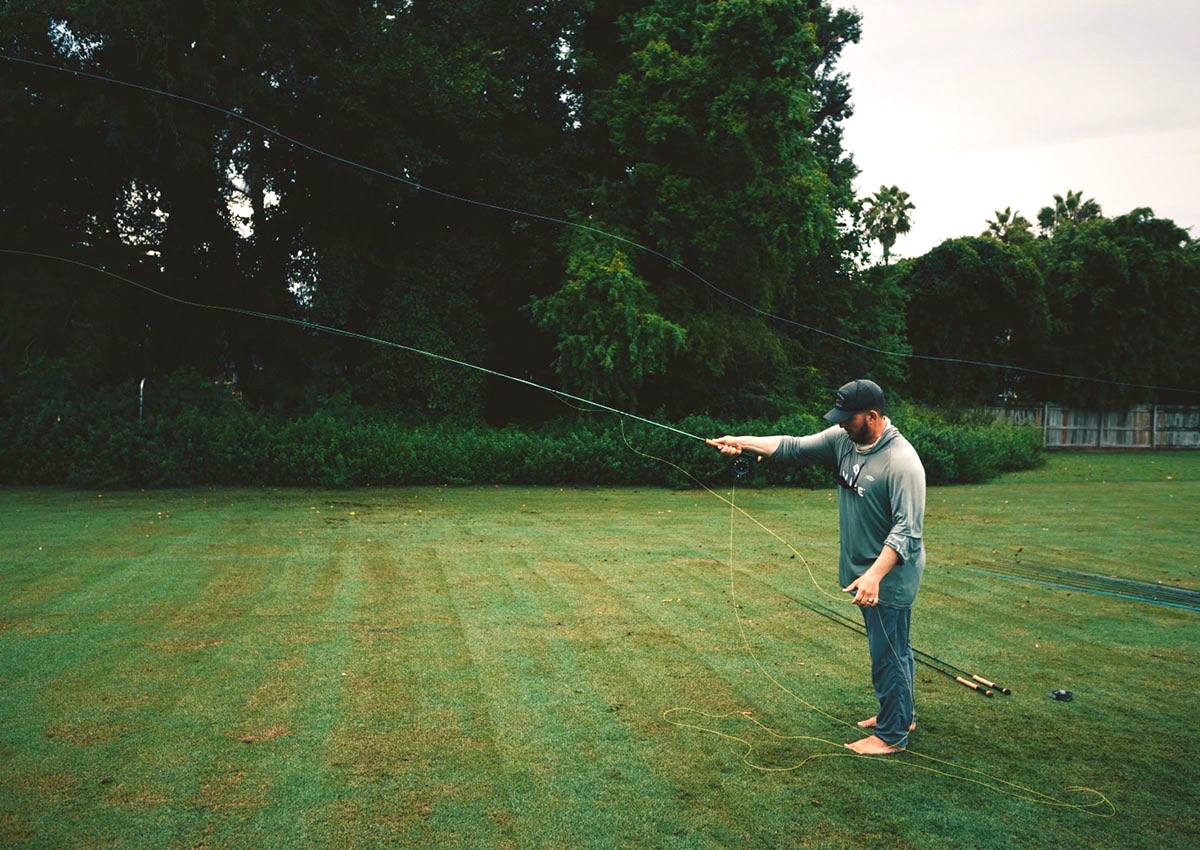

Accuracy
The accuracy test was performed at 45 and 60 feet, with targets measuring 30 inches wide by 20 inches tall. Each angler cast at the targets five times and we tracked how many times they landed the fly on the target. Then gave a one- to five-point accuracy score (five being the most accurate) based on the rod’s performance. The scores were averaged and listed in each rod’s key features.
This was a test where we saw the biggest difference among the rods. Some rods were very easy to land a fly consistently on or near the target, while others took more effort to dial in the accuracy and felt less forgiving from minor errors.
Distance
Each tester made five casts, and the longest of the five was measured. The cast distances were averaged and are found in each rod’s key features section.
One interesting thing about this test is that the maximum distance remained fairly consistent among all three casters. Rogers’ longest casts were in the 80 to 90 feet range, and Einsmann and Huges’ max distances were consistently around 70 feet. This shows that a better rod will not add a considerable amount of distance to the end of your cast. But, the better rods consistently had longer casts instead of one of the five being a bomb.
Ease of Casting
In addition to the accuracy and distance testing, we scored from one to five for ease of casting. This score is a significant portion of the review because, as we mentioned earlier, the distances remained fairly consistent. However, how easy it was to cast those distances dramatically differed depending on the rod.
Oftentimes in saltwater fly fishing, you only have one shot at a fish, and you need a rod that’s going to be forgiving in those situations. When your heart rate is up, and everything is on the line for that one cast, that’s where this ease of casting score is significant.
Equipment Used
Line
For the formal casting test, we used Scientific Anglers Amplitude Redfish. While fishing, we also used Scientific Anglers Amplitude Infinity, Rio Redfish, and Orvis PRO Saltwater All Rounder.
Flies
We used a Clouser minnow with the hook clipped off for the distance and accuracy test. While fishing, we used a variety of shrimp and crab patterns of similar size.
Reels
For the casting test, we used a Redington Grande reel. On the water, the rods were also outfitted with Orvis Mirage, TFO BVK SD, and Piscifun Sword.
Rods
We tested all 8-weight rods, and the length of the rod we tested will be listed in the key features section.
Best Saltwater Fly Rods: Reviews and Recommendations
Best Overall: Scott Sector
Why It Made the Cut
While we tested many great rods, the Sector was without question the best because of its incredible ease of cast and accuracy.
Key Features
- Max Cast: 76 feet
- Ease of Cast Score: 5/5
- Accuracy Score: 5/5
- Length: 9 feet
- Two, three, and four piece options
Pros
- Forgiving of casting errors
- Very easy to cast accurately and far
- Excellent balance of touch and power
Cons
- None
Product Description
The Sector feels like an extension of your arm. Tight loops form effortlessly, and the fly lands where you’re looking. Even our bad casts somehow hit the 60-foot target. Despite our different casting styles, we all cast this rod the best, and it was noticeably better than the others.
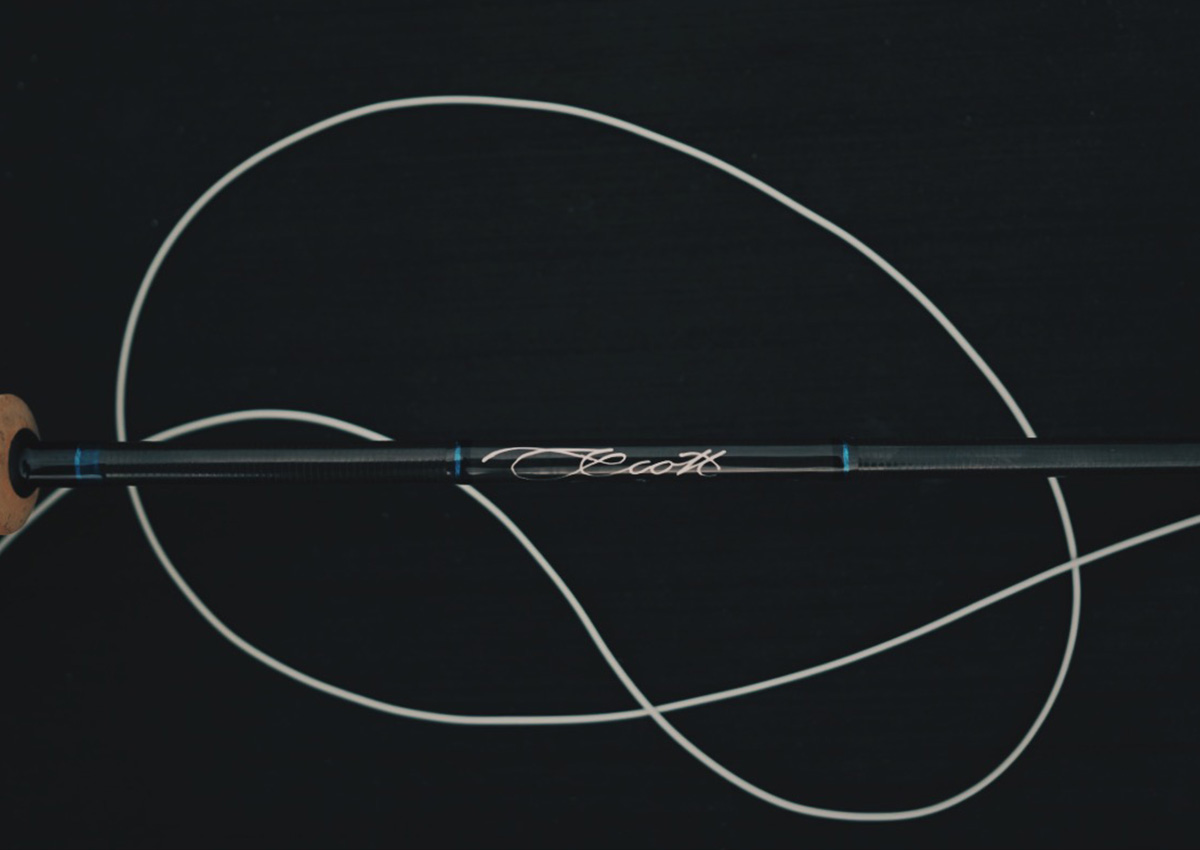
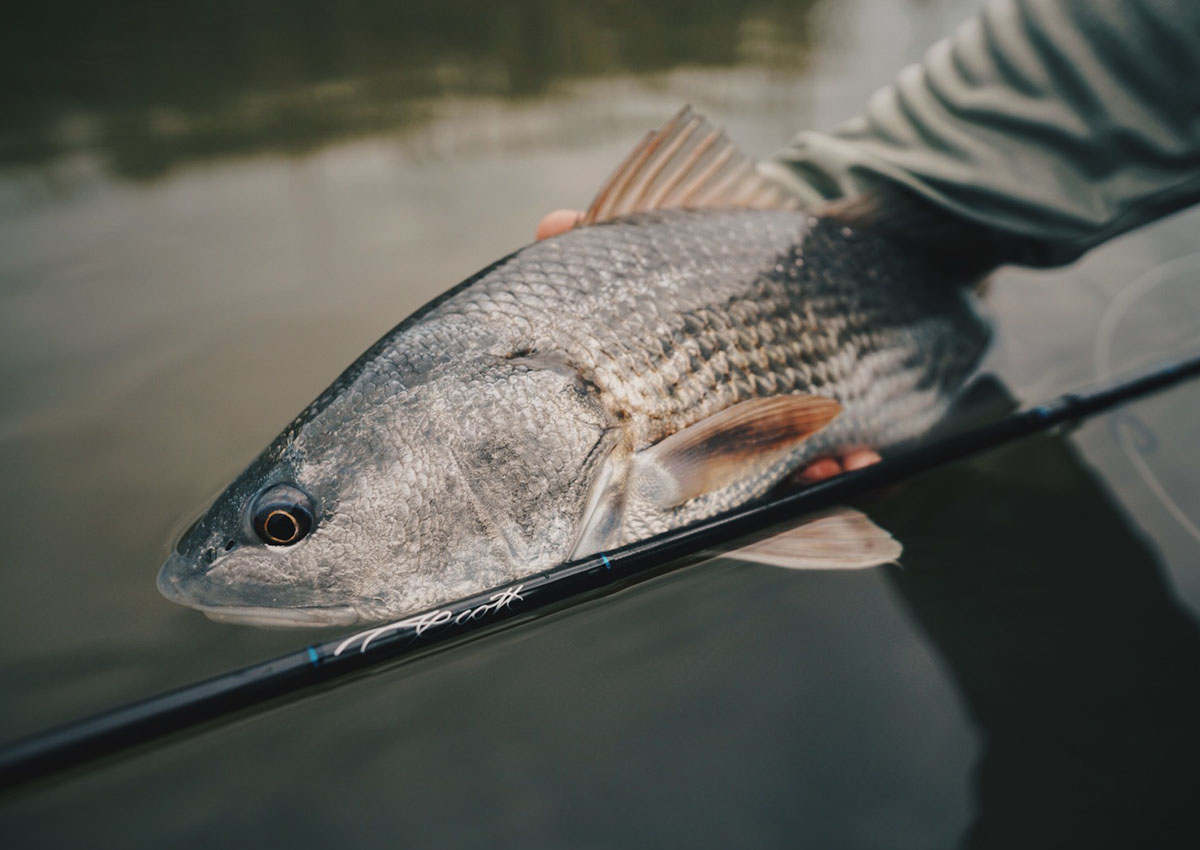
The Sector’s double locking reel seat is made from aluminum, and it never came loose during the two days of fishing. The blank has nickel titanium and Zirconia CeRecoil stripping guides and Recoil nickel titanium snake guides. The Flor modified wells cork grip was comfortable and finely finished.
The Sector has a soft feel when you’re casting it, but it also produces a lot of line speed for punching through wind and carrying a fly a good distance. During the distance test, we were consistently over 60 feet with each of our five casts. Compared to the other rods where we would have one or two casts that would reach our max range.
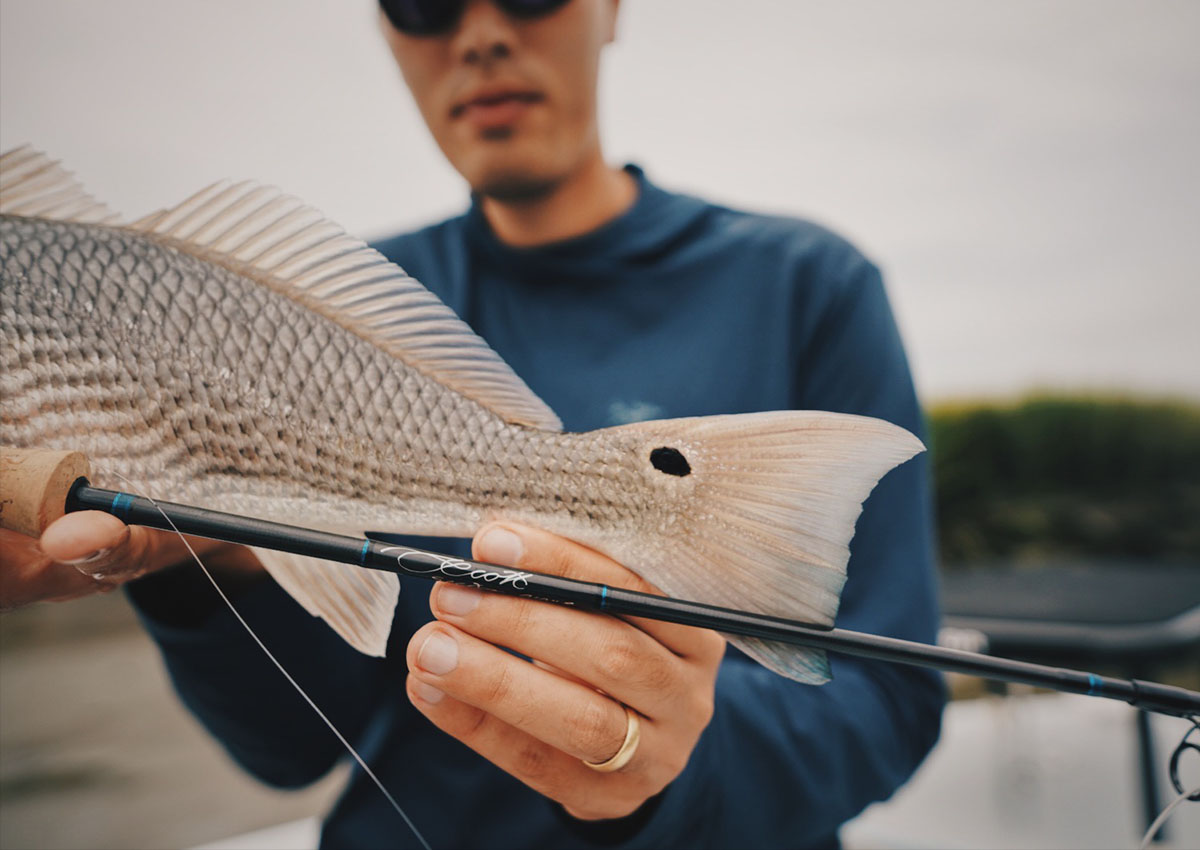
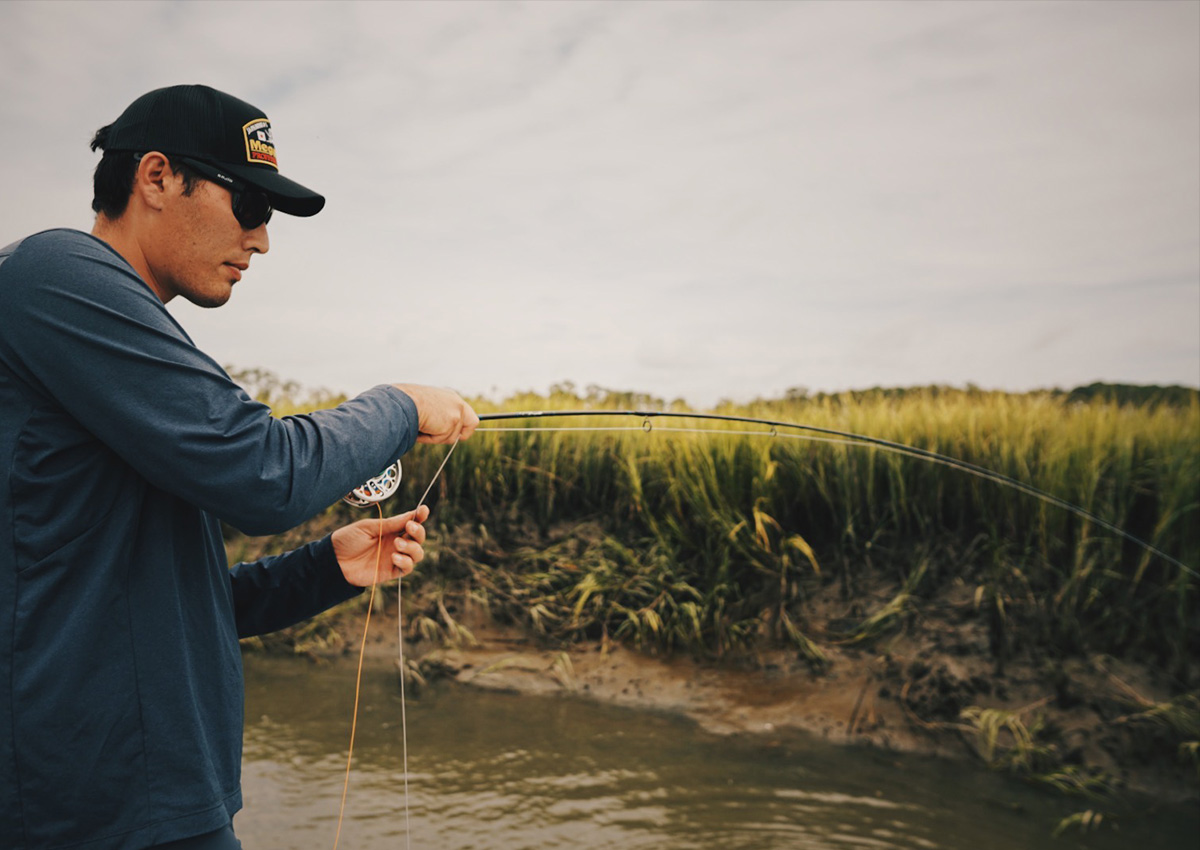
The consistently amazing performance carried over to the accuracy testing as well. We described the Sector as forgiving in that it made the task of throwing long and accurate much easier, and it saved bad casts. Some high-end rods are best suited to advanced fly casters, but the Sector is unique in that it seems to work for a wide range of skill levels and casting styles.
We tested five rods that retail for around $1,000, and it was surprising that the Sector was clearly better than the others in that pool of premium rods. When three anglers with three different casting styles all agree that one rod is the best, it’s worth taking notice.
Best Distance: Orvis Helios 3D
Why It Made the Cut
The Helios 3D had a considerably farther casting distance than the other rods in the test and it was easy to cast it at those ranges.
Key Features
- Max Cast: 81 feet
- Ease of Cast Score: 5/5
- Accuracy Score: 4.5
- Length: 9 feet
- Recoil snake guides
- Made in the U.S.A.
Pros
- Very easy to cast
- Low swing weight
Cons
- Balanced more toward power than touch
Product Description
The Helios 3D is a powerful rod that makes casting beyond 60 feet easy, even for intermediate casters. We felt like the Helios 3D was the easiest to cast far and well suited for a range of casting styles. If you’re going to spend all day throwing bombs, then this is the rod you want. It was also an impressively accurate rod at close and far distances.
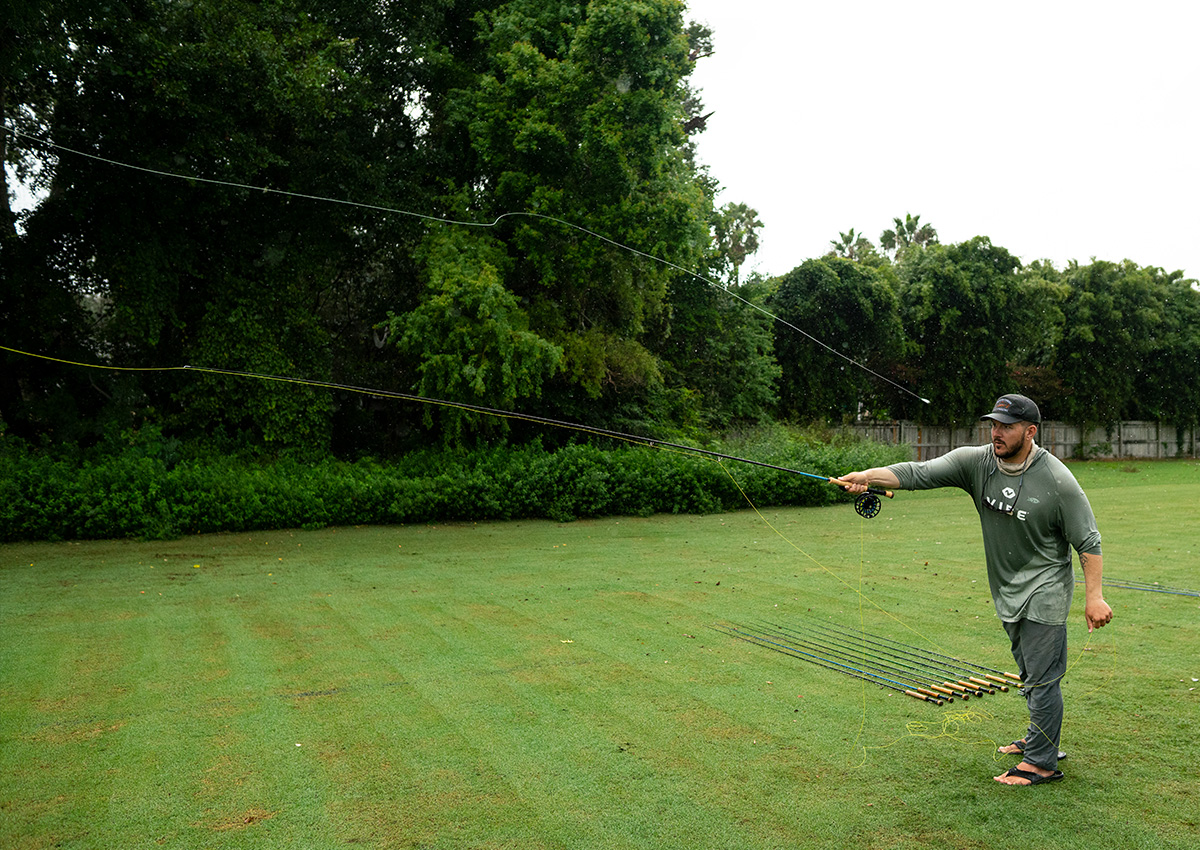
“While the looks are not my preference, I can’t help but love this rod. It’s one of the most enjoyable fly rods to throw on the market,” Rodgers said. “I think this rod can perform for almost all levels of fly caster. With that being said, I could cast all day with ease using this rod.”
The rod features silicon carbide and titanium stripping guides with black thread wraps. One of the test rod’s stripping guides had a significant gap in the thread wraps. It’s a minor fit and finish demerit that won’t affect performance, but it’s not something you expect to see on a rod of this price point.
In addition to dropping shrimp patterns in front of tailing reds, the H3D is a rod that also excels at casting large flies. Einsmann uses an 11-weight H3D for muskie fishing, and it throws 6- to 9-inch flies with ease.
The Helios 3D is a nice rod, and it’s definitely worth casting if you’re in the market for a high-quality saltwater rod. It didn’t blow us away like the Scott Sector, and it doesn’t have the impressive finish of the Zane Pro. But if you need to punch long casts in high winds, this is the best rod for that task.
Best Feel: G. Loomis NRX + Fly T2S
Why It Made the Cut
The NRX + T2S has a unique feel that’s hard to describe, but we loved it and thoroughly enjoyed fishing this rod.
Key Features
- Max Cast: 77 feet
- Ease of Cast Score: 4.5/5
- Accuracy Score: 4.5/5
- Length: 8 feet 10 inches
- Two piece
Pros
- Easy to cast far and accurate
- Low swing weight
- Powerful rod for fighting fish and punching through wind
Cons
- Hard to find in stock
- Not easy to pack
Product Description
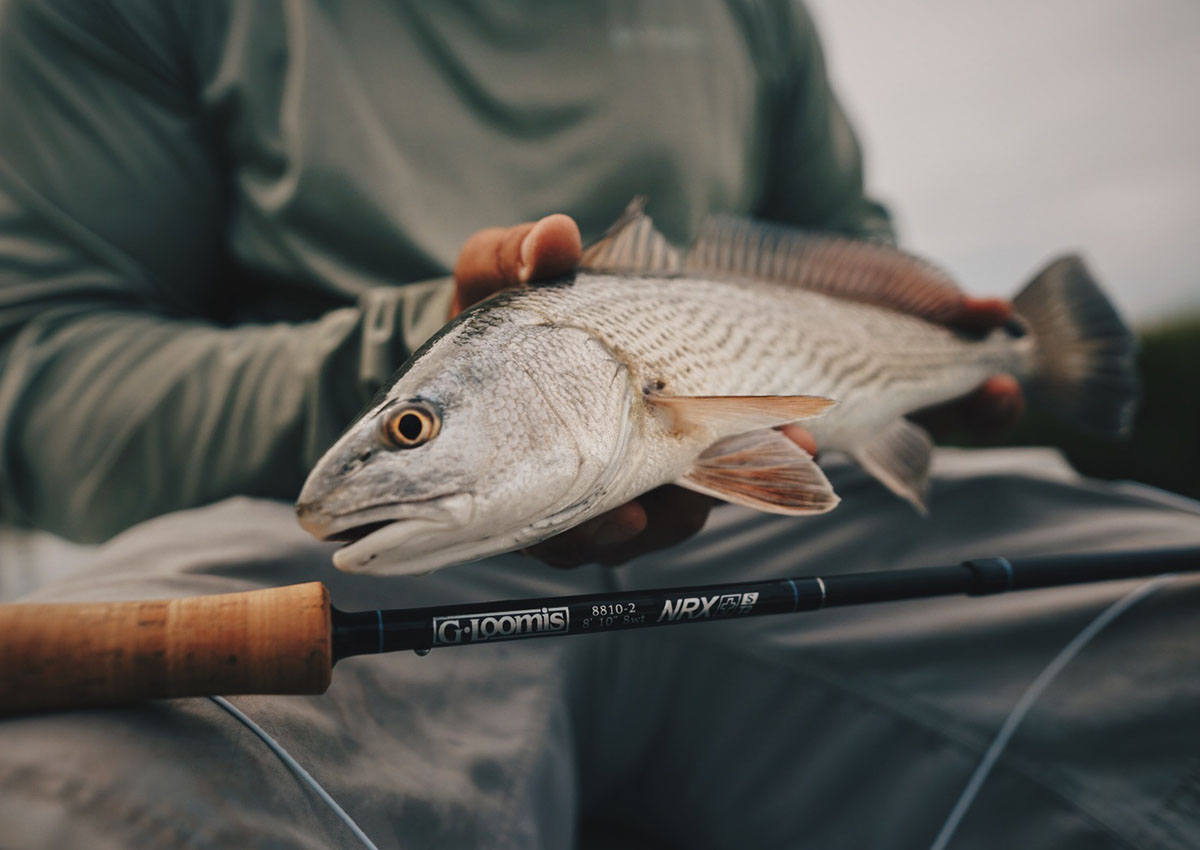
If you need a powerful rod for fighting big fish in tight quarters or punching a cast into a stiff breeze, then the NRX + T2S will do that. You can feel the power it has in its butt section, and that’s why we reached for it when we were in tight quarters. It also excelled at picking up line and shooting it back out with one false cast. This rod takes very little effort to generate good line speed, and a nice relaxed casting stroke produces casts over 60 feet. It was one of the easiest rods to cast at extended distances. We also tested the NRX + Fly Saltwater four-piece, and it casted like a completely different rod. All three of us preferred the two-piece over the four-piece.
“This two-piece rod is absolutely incredible,” Rodgers said. “It’s unlike the four-piece, which felt clunky and somewhat heavy in hand. Once you get past the weird configuration of the two pieces and start to cast, you realize you’re holding onto a canon.”
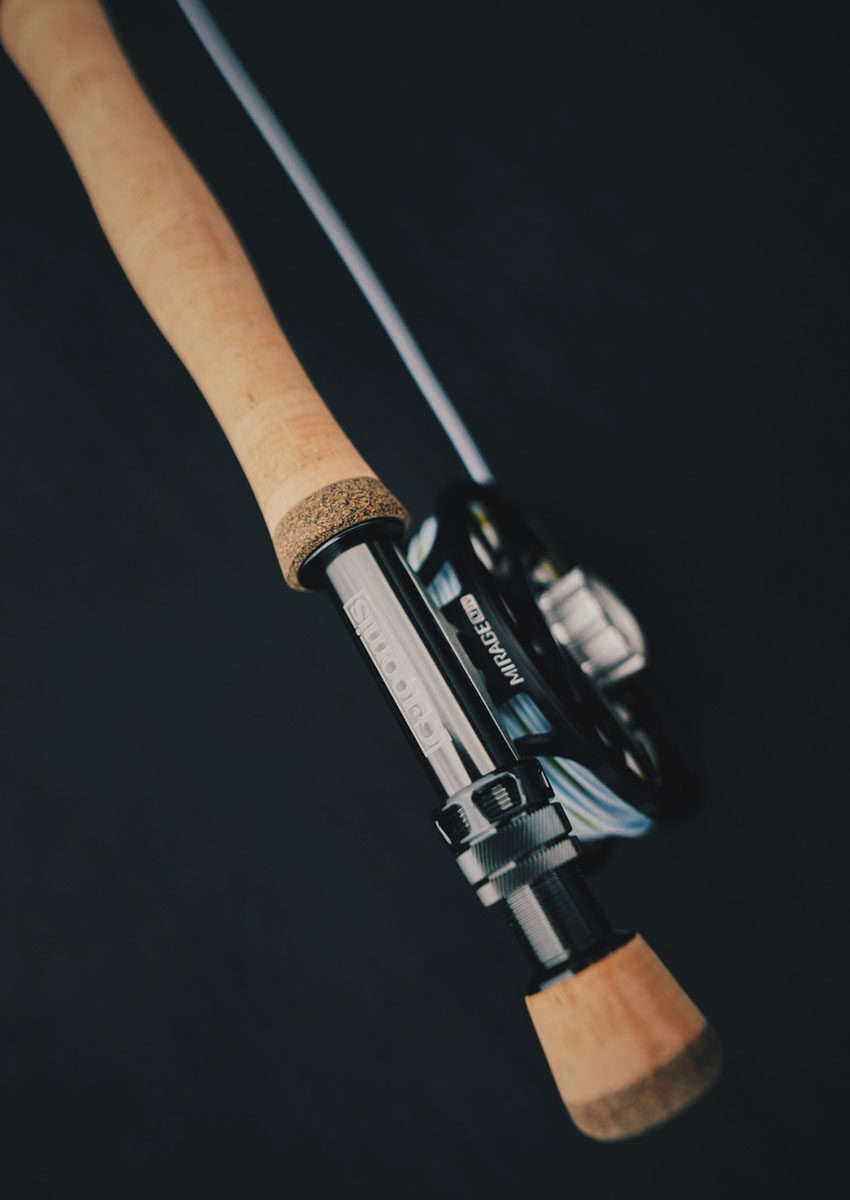
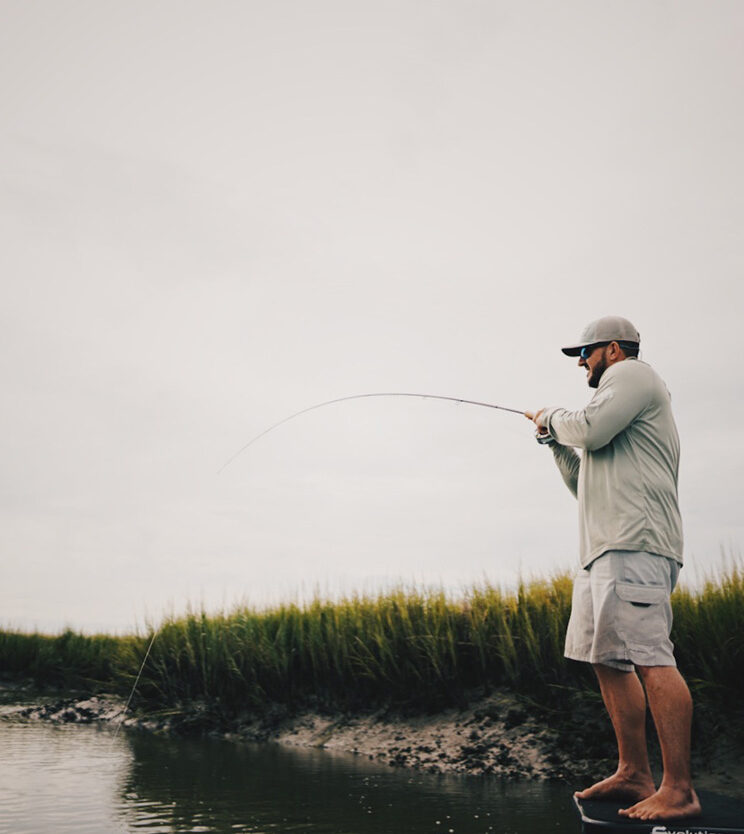
The two-piece NRX+ doesn’t come apart in the middle like you would expect from a two-piece rod. Instead, just the butt section is removed. This retains the feel of a one-piece rod in a slightly more travel and shipping-friendly package. The rod has a AAA cork full wells grip, recoil snake guides, and titanium SiC stripping guides—premium components for a top-of-the-line rod.
The NRX+ deserves to be on every serious fly angler’s shortlist, but they are also one of the hardest fly rods to find in stock. But, if you do find one at a fly shop, cast it.
Best Fit and Finish: Hardy Zane Pro
Why It Made the Cut
The Hardy Zane Pro is nothing short of remarkable in terms of build quality, and it has the casting performance to match.
Key Features
- Max Cast: 73 feet
- Ease of Cast Score: 4/5
- Accuracy Score: 4/5
- Length: 9 feet
- One or four piece
Pros
- Beautifully finished
- High quality rod tube, bag, and ferrule protectors
Cons
- Heavier swing weight than other premium rods
Product Description
When unboxing this rod, there is no doubt you’ve bought something special. Every piece of packaging is dripping with class. The rod tube has details like a circle of cork with Hardy logo burned onto it. Not only does it add a warm—and attractive—touch to the black tube, but it’s also padding for your rod. The rod bag is made from a heavy denier cloth and is nicer than any other rod bag. Then there are the metal ferrule protectors, which have tangible quality and add protection few manufacturers offer.
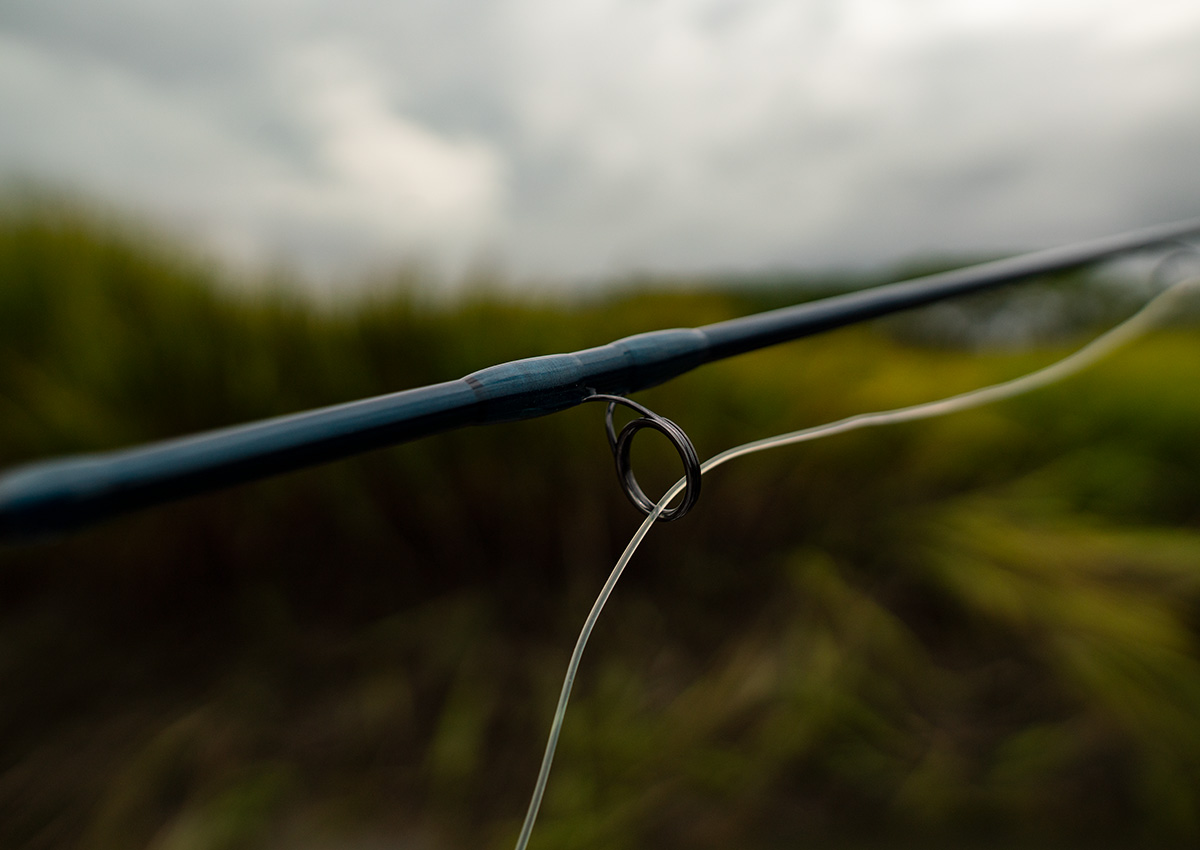
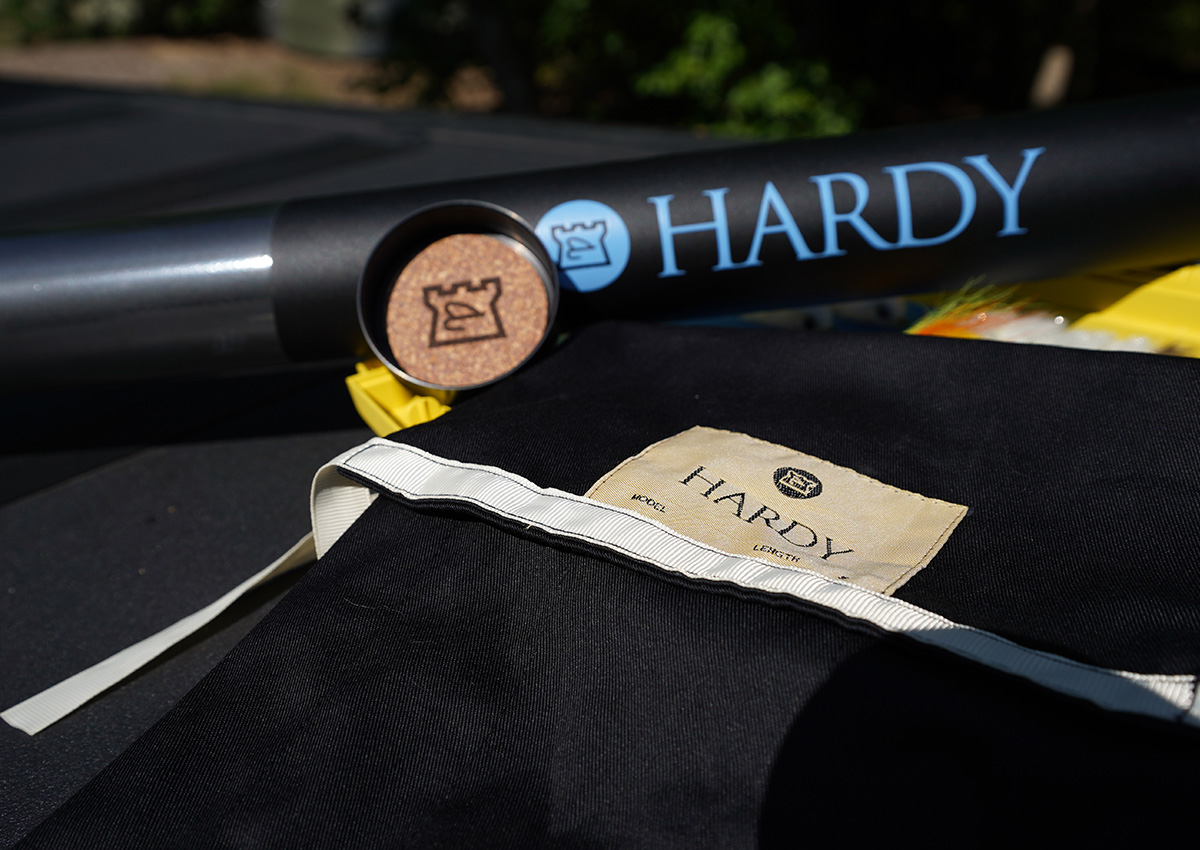
Rogers described the Hardy as a “true rod,” which means what you put into it, you get out of it. A light touch results in a finesse cast. When you put power into the rod, you generate good line speed and long casts. It performed well in both short- and long-range accuracy testing. The Zane Pro is slightly heavier than some of the premium rods, and you can notice the swing weight difference between it and NRX +, but it’s not what we would consider a heavy rod.
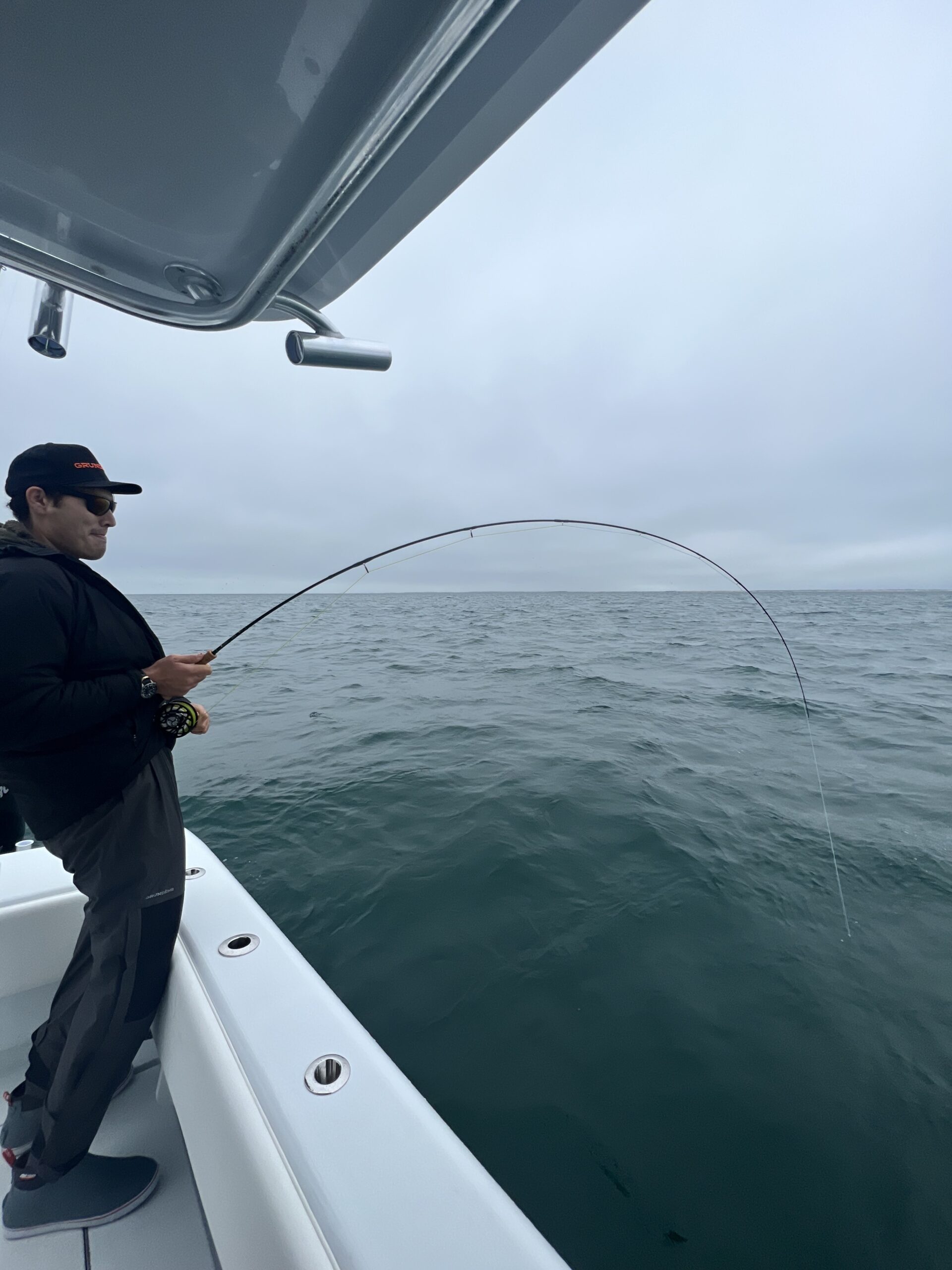
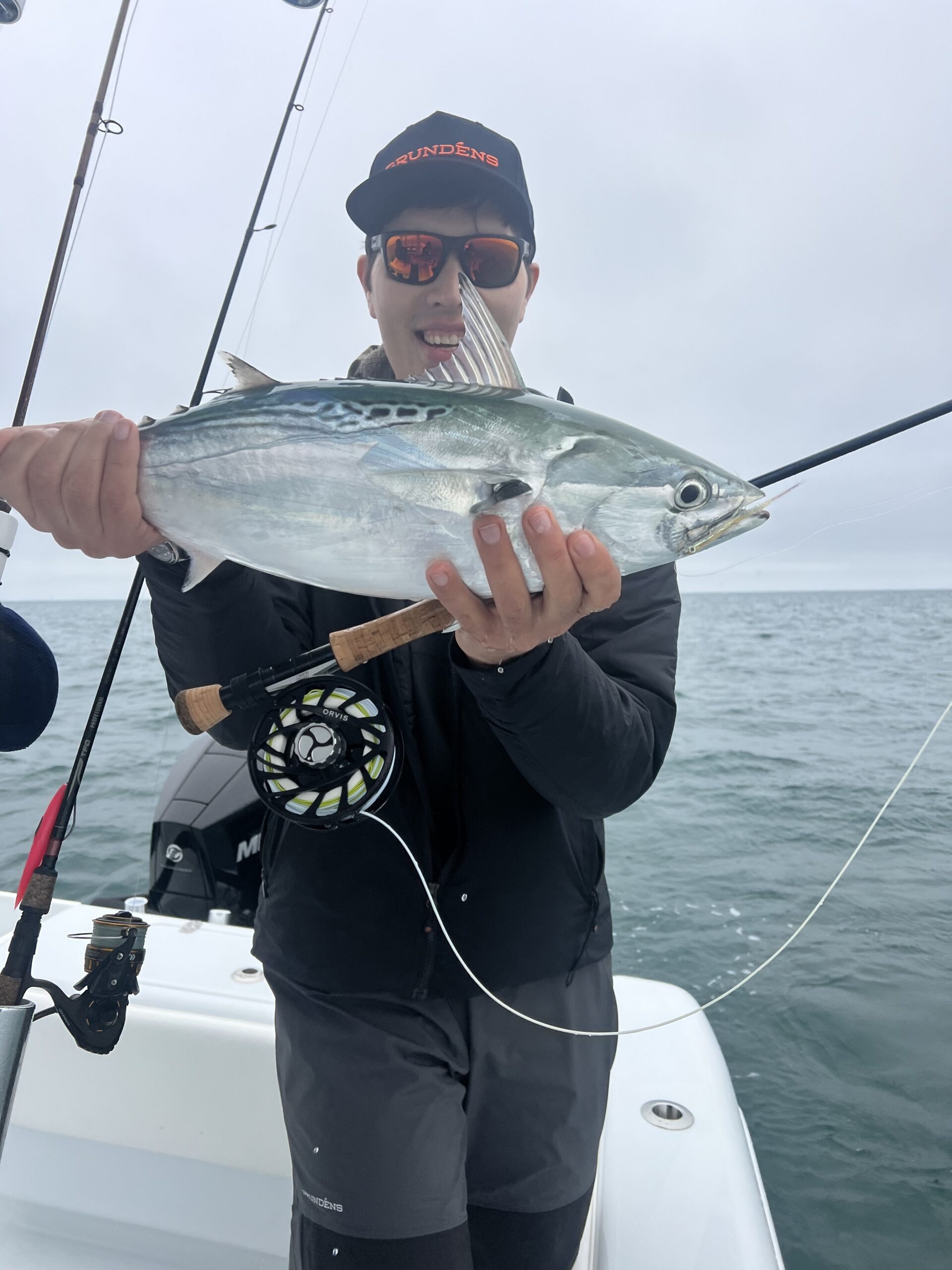
I also took the Zane pro on a false albacore trip to Morehead City, North Carolina. Fast and accurate casts were needed to land a fly on busting albies and then a powerful rod was needed to bring them to the boat. An 8-weight is on the lower end for catching albies, but the Zane Pro performed flawlessly.
The rod’s finish is faultless, and it casts damn well too. From butt to tip, every wrap and component is perfect. Spending a grand on a rod is a treat for most people, and the Zane Pro makes you feel like you’ve gotten a lot for the money.
Best for the Money: Redington Predator
Why It Made the Cut
This is a budget rod that feels like rods more than double its price.
Key Features
- Max Cast: 70 feet
- Ease of Cast Score: 3.5/5
- Accuracy Score: 4/5
- Length: 9 feet
- Lifetime warranty
Pros
- Powerful rod
- Responsive feel
Cons
- Not light
Product Description
The Redington Predator was the unanimous pick for the best budget rod. Many budget rods feel like a budget rod when you’re casting them, but not this one. The only tell that gave away the price point is its heavier swing weight.
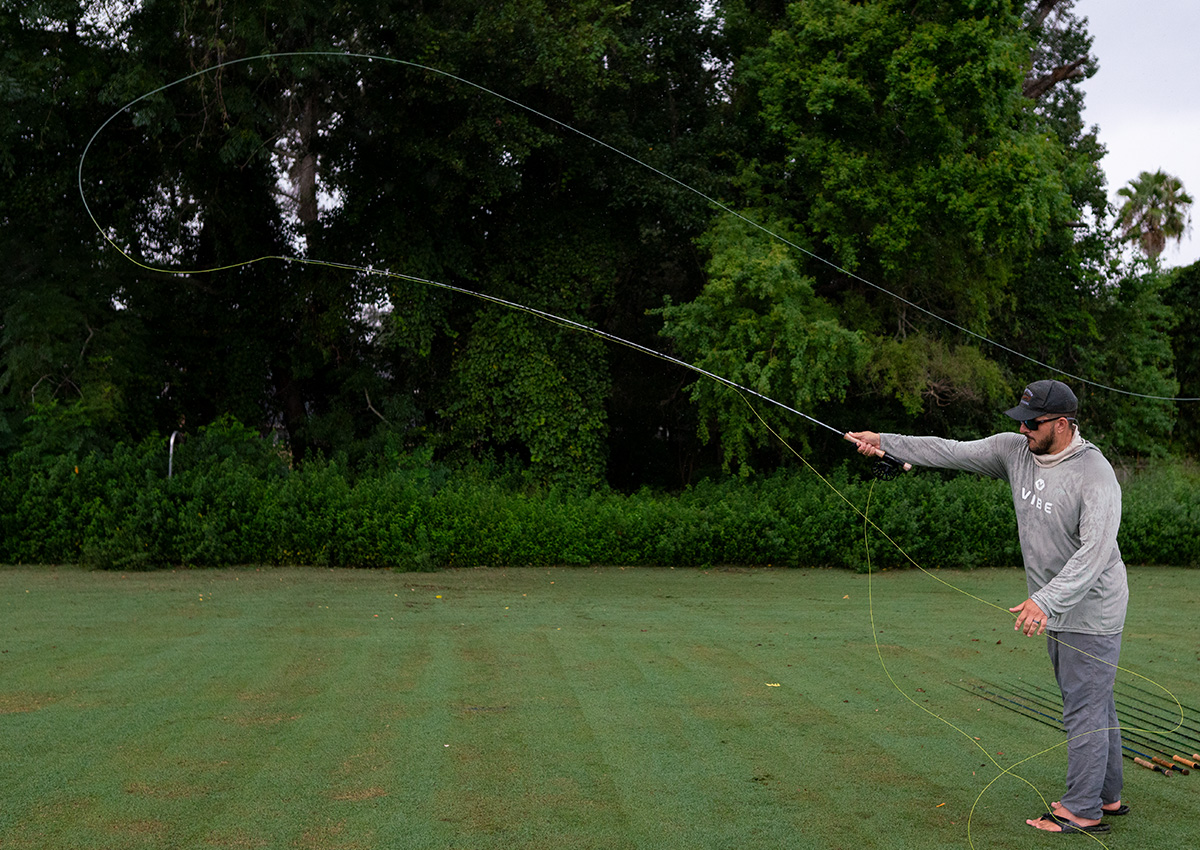
“I have a ton of experience with this rod because I use it daily with my clients,” Rodgers said. “For the price point, there is no better rod. I find myself comparing it to the most expensive rods on the market. It’s just that dang good.”
We tested the 9-foot, 8-weight, but the Predator comes in several species-specific models and up to a 16-weight Bluewater model. Each has aluminum oxide stripping guides with ceramic inserts and anodized snake guides.
Another thing that all three of us agreed on is that we would absolutely buy this rod for any type of saltwater fishing. It lacks the sticker shock of the high-end rods, and nearly matches their performance. If you’re looking to get started in saltwater fly fishing, this is, without a doubt, the rod that we would recommend, and it would be a long time before you would need to upgrade to a better rod.
TFO Axiom II-X
Why It Made the Cut
The Axion II-X was right behind the Predator in our favorite budget saltwater fly rod, and it did very well for distance and accuracy.
Key Features
- Max Cast: 79 feet
- Ease of Cast Score: 3/5
- Accuracy Score: 4/5
- Length: 9 feet
- Action: Extra fast
Pros
- Powerful rod for punching casts far and into wind
- Accurate
Cons
- Lacks finesse
Product Description
The TFO Axiom II-X is right behind the Redington Predator for performance for the money. It takes effort to cast this rod farther, but when you put power into the rod, the rod performs and generates good line speed. We found this rod likes a snappier casting style, and once adapted to it, the rod casts well.
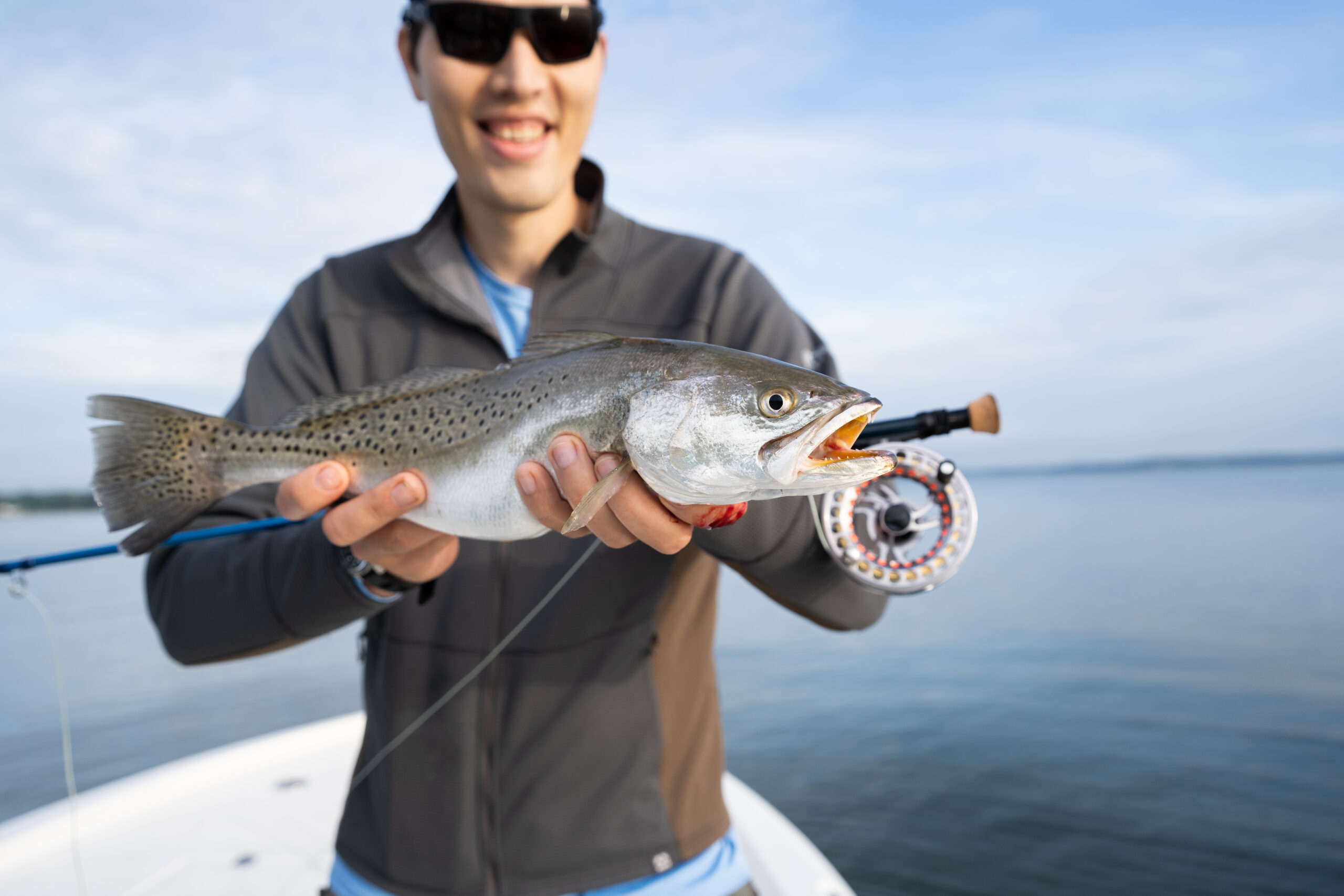
The Axiom II-X was one of Hughes’ top-performing rods. “The Axiom requires more force to cast well, but that helps balance out my faster casting style,” he said. “Despite a lack of finesse, it can reach where I need it to and is accurate at range.”
Orvis H3 Blackout
Why It Made the Cut
This is a rod you’ll either love or hate, but it’s a fantastic rod if it agrees with your casting style.
Key Features
- Max Cast: 73 feet
- Ease of Cast Score: 3.5/5
- Accuracy Score: 4/5
- Length: 8 feet 5 inches
- Made in the U.S.A.
Pros
- Shorter length makes the rod handy in tight quarters
- Accurate
- Very light
Cons
- Doesn’t match all casting styles.
Product Description
The Orvis Helios Blackout is a unique rod that you should cast before you purchase. Einsmann and Rodgers had a hard time getting along with it, but Hughes loved this rod and it matched his casting style perfectly. “It’s less obtrusive and allows for faster presentation to moving fish,” Hughes said.
One characteristic we all liked was the very low swing weight. This rod is a feather in the hand, and you barely feel the rod’s weight as you’re casting. We also agreed that the Blackout would be an excellent all-water rod for casting poppers for bass and jumping to saltwater for redfish or striped bass.
Maximum Catch Predator
Why It Made the Cut
The cheapest saltwater fly rod on Amazon, was surprisingly not terrible.
Key Features
- Max Cast: 70 feet
- Ease of Cast Score: 1
- Accuracy Score: 3
- Length: 9 feet
Pros
- Accurate
- Good action for new fly anglers
Cons
- Lacks power
- Heavy
Product Description
The Maximum Catch Predator was the least expensive rod in our test and it was noticeable from the moment we put it together. The rod has the action of a wet noodle, but we included it in the review because we wanted to see what one of the cheapest saltwater fly rods from Amazon could do.
It’s not a bad rod, especially if you change your casting style to one like you would use with a fiberglass rod. It was fairly accurate at 60 feet and it has a lot of feel. But, in any kind of wind this rod struggles to cast through it.
Sage R8 Core
Why It Made the Cut
The Sage R8 core is an all-water rod that performs well when lined with one weight lighter line.
Key Features
- Max Cast: 77.3 feet
- Ease of Cast Score: 2/5
- Accuracy Score: 3/5
- Length: 9 feet
Pros
- Accurate at close distances
- Can cast far when lined with one weight lighter line
Cons
- No alignment dots
- Underpowered
Product Description
The Sage R8 Core is a rod that is best for accurate short-range casts and delicate presentations. We found it underpowered for most saltwater applications, and we had to work exceptionally hard to cast beyond 60 feet. All the effort that went into throwing the cast hurt accuracy at 60 feet.
During the casting test, Rodgers said that he thought a 7-weight line would be more appropriate for the rod’s action. He later tested that theory and said it became a completely different rod that easily hit 90 feet.
If your fishing takes you from casting streamers to trout one day and to the salt the next, then this would be a rod to consider. Especially if you buy a heavier weight than you need and use one weight lighter line.
Orvis Recon
Why It Made the Cut
The Orvis Recon is a mid-priced rod with middle of the road performance.
Key Features
- Max Cast: 72 feet
- Ease of Cast Score: 3.5/5
- Accuracy Score: 3.5/5
- Length: 9 feet
- Made in the U.S.A.
Pros
- Accurate at 40 feet
Cons
- Not the best performance for the dollar
Product Description
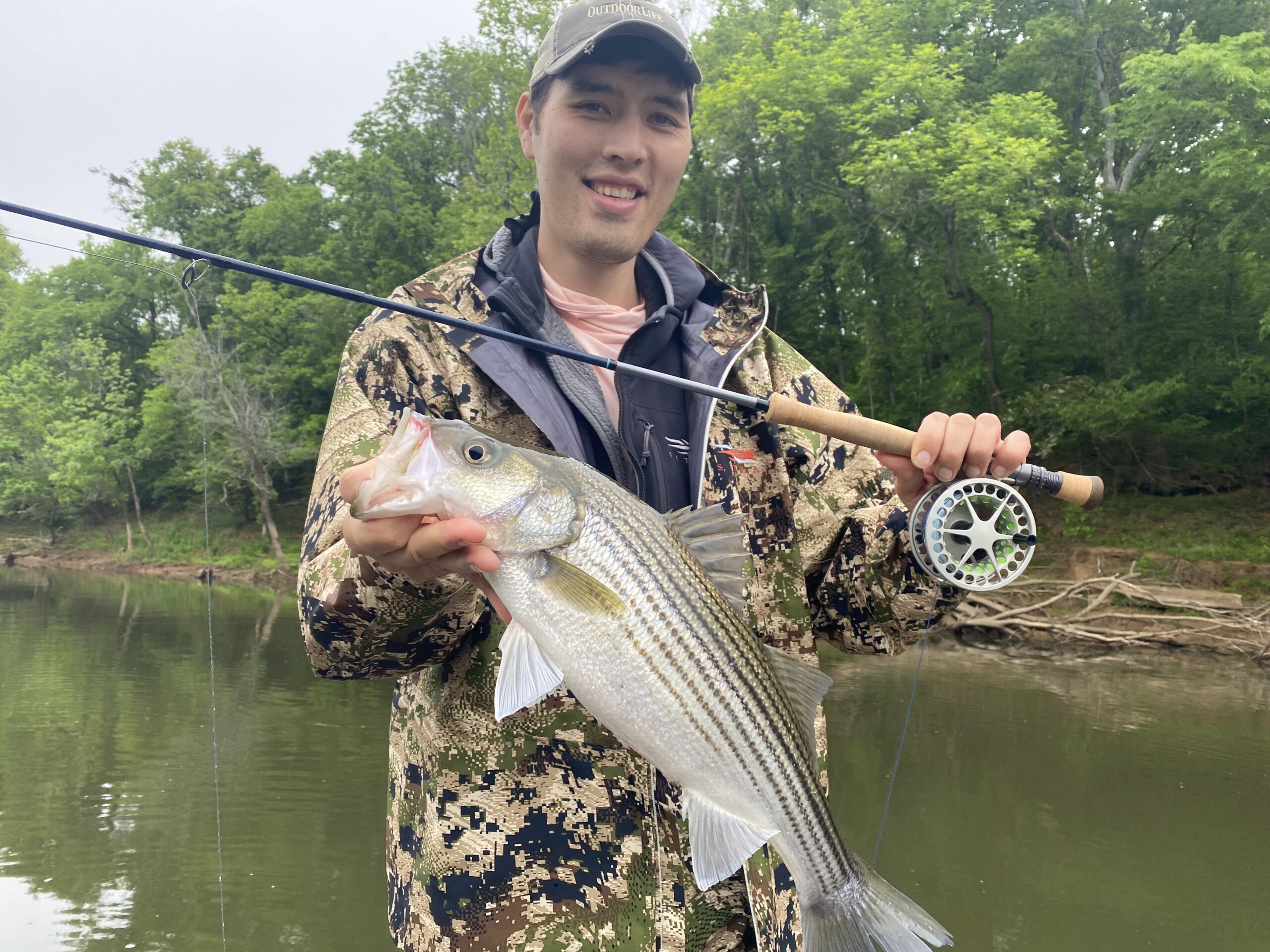
The Orvis Recon is a good rod but we feel that for the price point that it doesn’t have much better performance than some of the less expensive rods like the Redington predator. The $400 to $700, price range is a place where you don’t see much performance over the better budget rods, and still not the performance of the $1,000 rods. We just don’t think that you’re getting double the performance for your money.
Redington Vice
Why It Made the Cut
This is one of the best fly rods for beginners because it has an approachable price and has good performance for the money.
Key Features
- Max Cast: 76 feet
- Ease of Cast Score: 3/5
- Accuracy Score: 3/5
- Length: 9 feet
- Saltwater grade components
Pros
- Affordable
- Forgiving action for new fly anglers
Cons
- Heavy swingweight
Product Description
The Redington Vice is in the $200 price range where you don’t expect much from a fly rod. But for Hughes, it was his best distance rod. “The Vice is a firm rod with a lot of power, and it casts surprisingly far,” he said.
If you had your eyes closed while casting you would know that you were casting a budget rod. It just doesn’t have the refined feel of more expensive sticks. But it has good performance, and we think that for a new angler that this rod isn’t going to hold you back. It’s also a good all water rod, so if you need one 8-weight for both freshwater and saltwater, especially if you’re on a budget, the vice is an excellent rod for the money.
How to Choose a Saltwater Fly Rod
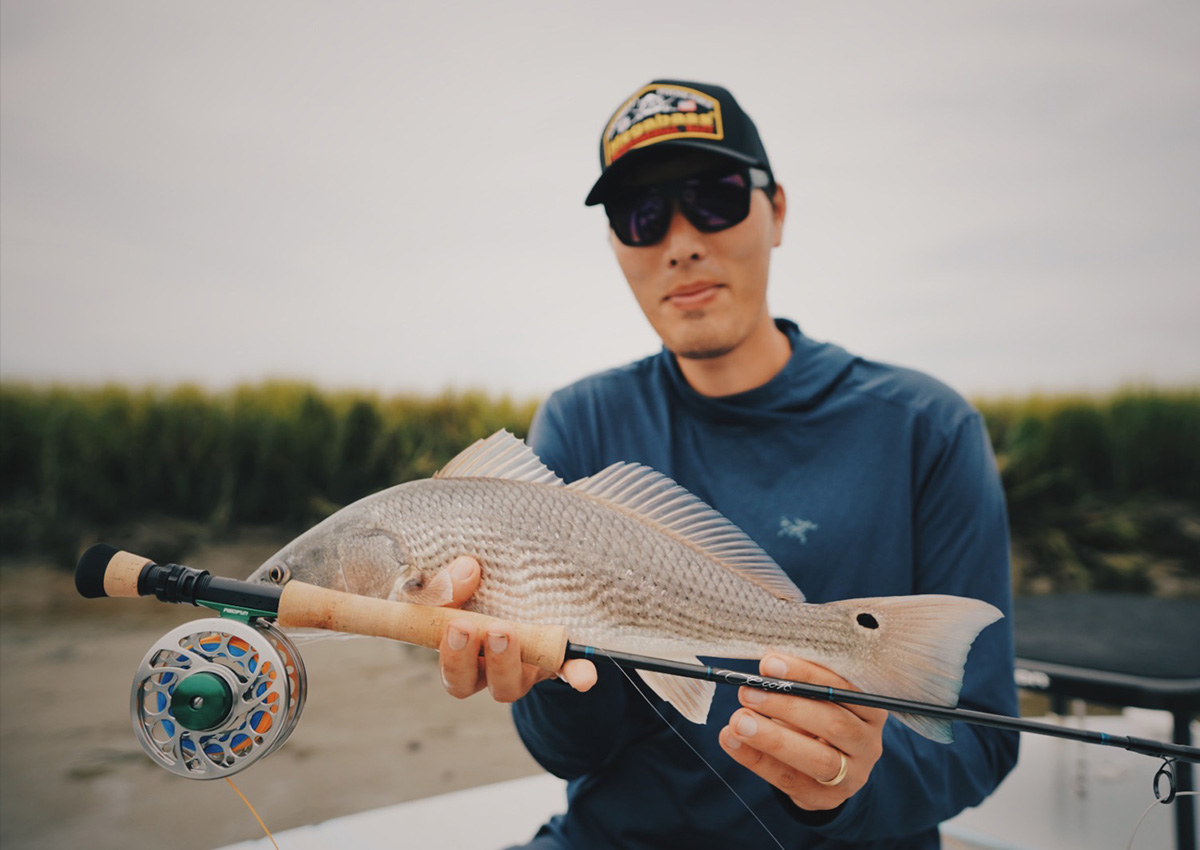
Price
Fly fishing is crazy expensive. You can buy a really nice spinning rod for $200, but that’s the entry point for fly rods—and a drop in the bucket compared to the best saltwater fly reels. Expensive rods have a nicer fit and finish, and they’ll be lighter than cheap ones. But the main difference is that an expensive rod makes casting far and accurately much easier. When you need to make that one perfect cast, or you’re spending all day casting, a nicer rod is what you want in your hand.
Rods can be purchased for under $200, but they lack the casting performance needed for saltwater. Budget rods we recommend land in the $200 to $400 range. Those rods include the Redington Vice, Redington Predator, and the TFO Axiom II-X. All will throw a fly in the wind and with accuracy.
If you want to upgrade from there, we recommend skipping past the $400 to $700 price range to the best of the best. The top rods are all around $1,000. In that arena, you have several fantastic options, and the best way to find out which is going to work for you is to cast them at a fly shop.
Fishing
Fly rods come in various weights and lengths. The standard fly rod length is 9 feet, and it’s a great place to start unless you need a rod for a specific situation. A rod in 8 or 9 weight is ideal for most inshore saltwater fly fishing. If you’re getting into throwing big flies or larger fish like bull reds, cobia, tarpon, jacks, and 40+ inch stripers, you’ll need to step up to a 10- or 11-weight. Rods in the 12- to 16-weight range are for big game like billfish and sharks.
Read Next: The Best Fly Rods for Bass, Tested and Reviewed
FAQ
A 9-feet, 8- or 9-weight rod is perfect for all-around saltwater fly fishing.
The 8-weight is the perfect versatile fly rod. You can use them to catch bass, pike, and salmon in freshwater and then move inshore for baby tarpon, snook, striped bass, redfish, speckled trout, and more.
Saltwater fly rods are made with corrosion-resistant components and just need to be rinsed with fresh water and wiped down after use. Then stored in a rod bag and tube.
Final Thoughts on the Best Saltwater Fly Rods
Testing 12 of the best saltwater fly rods side-by-side allowed us to see each rod’s nuances and gave a clear picture of the top performers. We had a clear overall winner in the Scott Sector and a clear best budget rod winner in the Redington Predator. Those rods will work well for most people, but it’s still best to test out a few for yourself to see how they work for you.
